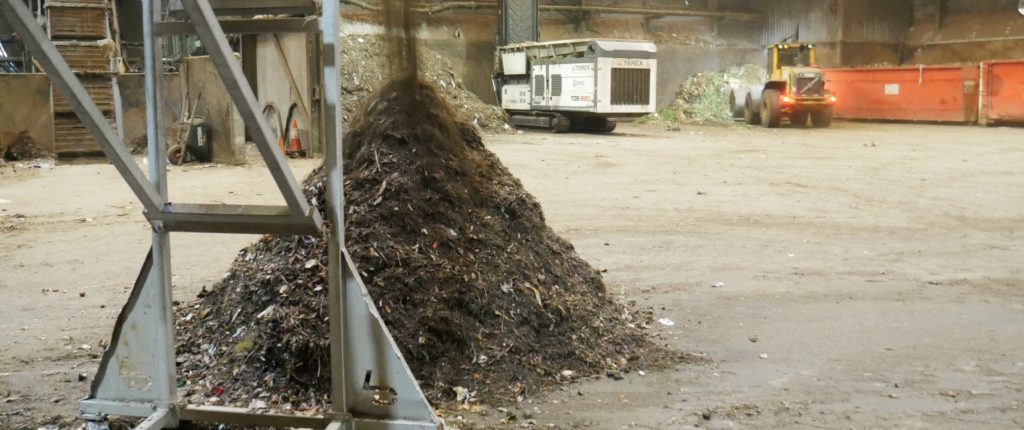MEDIA RELEASE
Plenty of capacity for FOGO processing in Canning Vale
By Teresa Belcher,
7 November 2022
Resource Recovery Group’s Canning Vale Centre currently has over 90,000 tonnes per annum spare capacity to process Food Organics, Garden Organics (FOGO) waste.
Recent media reports have claimed that several WA councils are choosing Waste-to-Energy over FOGO – the Food Organics, Garden Organics bin system that the WA State Government has recommended all councils adopt by 2025.
Part of the justification for this decision, or delay in adopting FOGO, is that Perth/Peel does not currently have the FOGO processing capacity. This is simply not true.
FOGO being made into compost
Since 2019, Resource Recovery Group has collected FOGO from residents’ kerbside bins and pre-processed it to remove contamination. It is then transported to composting partners Purearth and GO Organics to be made into various products such as compost and garden soil.
The high-quality product meets Australian standards for use not only in farming scenarios but also in construction work, rehabilitation and by residents in their backyards.
“There are many potential markets for FOGO product in Western Australia, and most definitely the demand for this,” Resource Recovery Group’s Chair Cr. Doug Thompson said.
Rivers Waste-to-Energy deal
Rivers Regional Council signed up to a Waste-to-Energy deal that pre-dated the WA government’s commitment to FOGO. Eight Perth councils have agreed to supply waste for the Kwinana Waste-to-Energy plant that will be operational in 2023.
These councils are claiming that sending FOGO to the Waste-to-Energy facility along with their residual waste will meet their contractual arrangements.
However, Environment Minister Reece Whitby MLA has suggested residual waste from other sources in WA could fulfil the volume of waste required by Rivers Regional Council’s Waste-to-Energy deal.
“Waste-to-Energy is an option to take residual waste, and definitely a better solution than it going to landfill,” Cr. Thompson said.
“It’s vital, however, that we do not burn and waste the nutrient-rich resource that FOGO provides.”
It’s important to also consider that FOGO creates 0.5 tonnes of carbon abatement for each tonne of FOGO composted compared to the increased carbon emissions resulting from burning organics in Waste-to-Energy,” Cr Thompson said.
FOGO cost effective
Claims have also been made that Waste-to-Energy is cheaper than FOGO processing. Again, this is not true.
“FOGO Processing fees are around 10-20% less than Waste-to-Energy gate fees,” Cr Thompson said.
Additionally, with the two Waste-to-Energy plants currently under construction located in Kwinana and Rockingham, collection vehicles will have to travel much further to transport waste to these facilities compared to driving to Canning Vale for FOGO processing.
Meeting the WA Waste Strategy targets
The existing 2-bin systems in Perth and Peel will not achieve the WA Recovery of Resources targets set by the State Government of 70% by 2025 and 75% by 2030.
The only way to achieve this is to adopt the 3-bin FOGO system in accordance with WA State Government Waste Strategy.
Estimated resource recovery rates in accordance with WA State Government waste strategy are:
- Waste-to-Energy (2 bin system) >> 36 to 41%
- GO with Waste-to-Energy (3 bin system) >> 52 to 57%
- FOGO with Waste-to-Energy (3 bin system) >> 73% to 76%
– Ends –
For further information please contact:
For further information please contact:
Teresa Belcher
Communications Manager
Resource Recovery Group
Mobile: 0488 594 324
Email: tbelcher@resourcerecoverygroup.com.au
